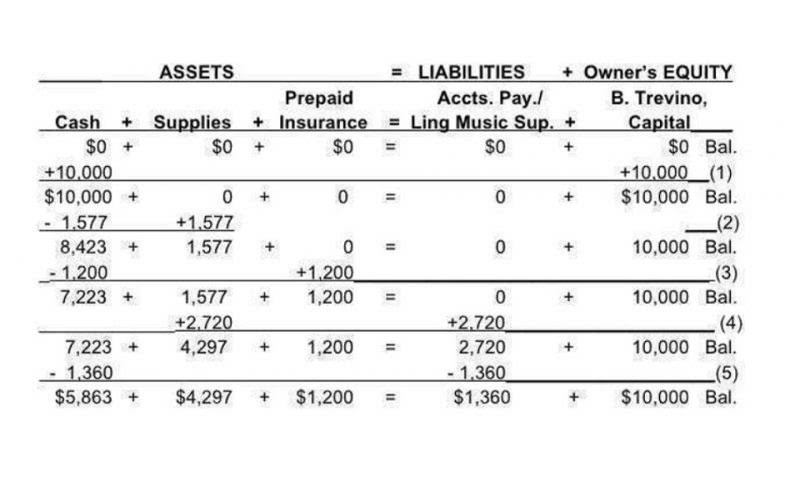Change in Net Working Capital NWC Explained
So, let’s perform these four simple steps one by one with me for calculating changes in the NWC of Walmart Inc. This 16% shows that the company is increasing its Net Working Capital Ratio, which means it’s putting more of its money into things that can be quickly turned into cash. This is a good sign for the company because it is trying to keep its money accessible and ready for use. This includes bills and obligations you still need to pay, such as what you owe to your suppliers, lenders, or service providers. Continuing with the example, if you owe $678,000, you will subtract this amount from your $2.158 million, leaving you with $1.48 million.
Facilitating Future Planning:
- So do many engineering, construction, financial services, insurance, healthcare, dental, and real estate professionals.
- This is a good sign for the company because it is trying to keep its money accessible and ready for use.
- Now, let’s move toward our final step that is the calculation of changes in working capital.
- Since the growth in operating liabilities is outpacing the growth in operating assets, we’d reasonably expect the change in NWC to be positive.
- A business owner can often access more attractive small business loan rates and terms when the firm has a consistent working capital policy.
- Free Cash Flow to Equity is also a popular way to assess the performance of a business and its cash-generating ability exclusively for equity investors.
- The increase in the inventory has been matched by a corresponding increase in accounts payable so the net change in working capital is zero, and the corresponding cash flow from the business is zero.
We offer business loans from $5K to $2M with flexible repayment terms up to 24 months. And with features like automatic daily or weekly payments, we try to make the financing part as straightforward as possible so you can focus on running your business. In our example, if the retailer purchased the inventory on credit with 30-day terms, it had to put up the cash 33 days before it was collected. Here, the cash conversion cycle is 33 days, which is pretty straightforward. Since companies often purchase inventory on Medical Billing Process credit, a related concept is the working capital cycle—often referred to as the “net operating cycle” or “cash conversion cycle”—which factors in credit purchases.
Net Working Capital Calculation Example (NWC)
- Finally, you subtract any other financial obligations considered liabilities, such as employee wages, interest payments, and short-term loans that will come due within the next year.
- As shown above a change in inventory, accounts receivable, and accounts payable results in a change in working capital and a cash flow in or out of the business.
- So, businesses should define these two elements differently for financial decisions.
- If the change in working capital is positive, then you have more assets than liabilities.
- In industries like retail and ecommerce, they often face huge fluctuations in inventory levels.
- Which makes it easier for the company to pay suppliers and cover operating expenses.
Again, notice the similarities in each company’s language when differentiating between assets and liabilities. Changes in working capital will help you determine where Microsoft is in its working capital cycle. Companies will try to shorten their working capital cycle by collecting receivables sooner or extending accounts payable. Sometimes, companies also include longer-term operational items, such as Deferred Revenue, in their Working Capital. Sometimes you need a financial buffer or a strategic injection of funds to manage these fluctuations smoothly.
- If the change in NWC is positive, the company collects and holds onto cash earlier.
- For example, imagine the appliance retailer ordered too much inventory – its cash will be tied up and unavailable for spending on other things (such as fixed assets and salaries).
- We have covered a lot of ground today, discussing the particulars of changes in working capital and what they mean for our business.
- Below is a short video explaining how the operating activities of a business impact the working capital accounts, which are then used to determine a company’s NWC.
- At the same time, lower working capital can also cause difficulties in borrowing loans for terms.
- • External financing options include angel investors, small business grants, crowdfunding, and small business loans.
- Change in working capital is a cash flow item that reflects the actual cash used to operate the business.
Cash Flow Statement
The change in NWC comes out to a positive $15mm YoY, which means the company retains more cash in its operations each year. In our hypothetical scenario, we’re looking at a company with the following balance sheet data (Year 0). In the absence of further contextual details, negative net working capital (NWC) is not necessarily a concerning sign about the financial health of a company. The net effect is that more customers have paid using credit as the form of payment, rather than cash, which reduces the liquidity (i.e. cash on hand) of the company. An increase in the balance of an operating asset represents an outflow of cash – however, an increase in an operating liability represents an inflow of cash (and vice versa).

Additional Resources

If this is increasing, the company is delaying the use income statement of cash to pay income taxes to the government. This is the complete guide to understanding net working capital, calculating changes in working capital, and applying this to calculating Warren Buffett’s version of free cash flow, Owner Earnings. We’ll review the concepts, the formulas, and walk through several examples.


But from an owner’s point of net working capital view, you must have to calculate changes in working capital based on the cash flow statement approach. Changes in NWC are directly related to the cash outflow and cash inflow and hence the cash flow statement so. Thus, the second post provides you with a detailed understanding of how to calculate changes in net working capital from the cash flow statement. Current liabilities refer to debts a company must pay off within a year. Accounts payable, short-term debt and accrued expenses are taken as current liabilities.
